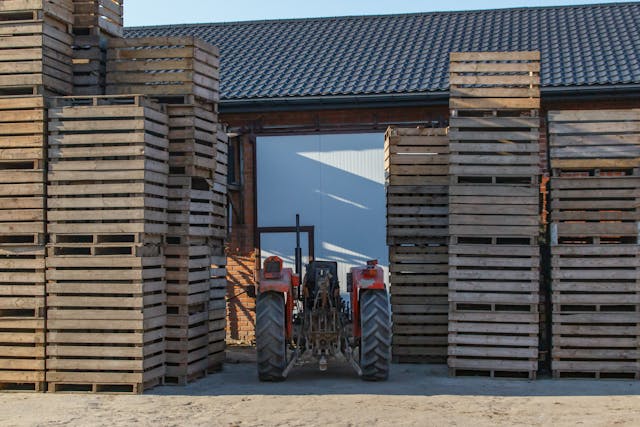Key Takeaways
- Crop storage buildings protect produce from weather damage.
- Enhancement of crop quality boosts marketability.
- Facilitates improved supply chain management with efficient storage solutions.
- Reduces post-harvest losses, ensuring sustainable farming practices.
- Provides environmental and economic benefits through energy efficiency.
Overview of Crop Storage Buildings
The agricultural industry heavily relies on the effectiveness and reliability of crop storage systems to maintain the integrity of produce after harvest. Quality crop storage buildings are more than mere storage solutions; they are integral to a farm’s operational framework. These structures are meticulously designed to protect crops from environmental threats, including pests, moisture, and temperature fluctuations, ensuring the harvested crops remain in optimum condition until they reach the consumers.
Maintaining quality is paramount in today’s highly competitive agricultural markets. By incorporating modern storage facilities, farmers can significantly reduce losses and enhance the efficiency of their post-harvest operations. This ensures a more steady and reliable supply, vital for sustaining crops’ nutritional quality and the economic viability of farming ventures.
Protection Against Weather Elements
Weather unpredictability poses one of the most significant challenges in agriculture, with seasonal changes and unexpected weather events capable of causing substantial damage to unprotected crops. Robust crop storage buildings play a crucial role in this scenario, providing essential protection from environmental challenges such as heavy rainfall, hailstorms, and extreme temperature fluctuations. These facilities ensure that harvested produce remains safe and viable, helping farmers mitigate losses caused by unpredictable weather patterns. These structures are created to uphold a consistent internal atmosphere, a critical factor in avoiding any deterioration or decline in quality.
Weather-resistant storage solutions are becoming even more imperative in regions frequently affected by adverse weather. With climate change intensifying weather patterns globally, the demand for such resilient infrastructure is growing.
Enhancement of Crop Marketability
Preserving the freshness and quality of crops during storage is critical for preventing loss and enhancing marketability. High-quality storage facilities play a pivotal role in maintaining produce’s aesthetic and nutritional value. By avoiding bruising, spoilage, and decay, these buildings ensure that crops are delivered to market in prime condition. This preservation boosts the crop’s appeal to buyers and allows farmers to command better prices and enter markets with higher quality standards.
Farmers who invest in superior storage solutions position themselves more favorably in the market discussion. They gain a competitive edge not by increasing production but by enhancing the quality and reliability of their supply. This strategy underscores the importance of storage buildings as critical drivers of agricultural profitability and sustainability.
Facilitation of Improved Supply Chain Management
Effective supply chain management is critical to the success of any agricultural venture. High-quality storage facilities facilitate smoother and more efficient logistics, allowing for better inventory management. These storage solutions enable producers to organize and plan their shipments more effectively, aligning their output with market demand and reducing storage and transport delays.
Enhanced supply chain management directly translates into cost savings and increased profitability. Farmers can improve the dependability and productivity of their operations by cutting waste and streamlining delivery schedules. This thorough supply chain handling guarantees that products are delivered to customers in the best possible freshness, establishing a solid image of dependability and excellence.
Reduction of Post-harvest Losses
One of the main challenges affecting agriculture worldwide is the substantial amount of crops lost after harvest. Most of what is grown fails to reach the end consumer due to improper storage and handling. Investing in high-standard crop storage buildings can dramatically reduce these losses by providing the ideal environmental conditions necessary for preserving the integrity of produce over extended periods.
Post-harvest loss prevention protects farmers’ investments and contributes to greater food security, a critical factor in global hunger and nutrient distribution.
Environmental and Economic Benefits
Sustainability is a fundamental aspect of modern agriculture, and high-quality crop storage buildings contribute significantly to this goal. These amenities are created to reduce energy usage by utilizing advanced technologies for optimal efficiency. This decrease reduces operations costs and helps decrease the agricultural industry’s carbon footprint, aligning farming methods with environmental conservation endeavors.
Quality storage solutions are an investment in the long-term viability and profitability of agricultural farming. By reducing operational costs and enhancing ecological sustainability, they provide a dual advantage. This strategic balance of economic gain and eco-friendly practice illustrates the comprehensive benefits offered by contemporary crop storage infrastructure.





